The Top Methods for How to Brew Coffee at Home
The Top Methods for How to Brew Coffee at Home
Curious about how to brew coffee at home like a pro? You’re in the right place. This guide will walk you through everything from choosing beans to mastering brewing methods like French Press, Drip, and Pour-Over. Let’s get started!
A Few Things to Remember Before You Brew
Before exploring different brewing methods, understanding some key principles will set the foundation for a great brew. Selecting the appropriate coffee beans is crucial. The type and origin of the beans significantly affect the overall taste and caffeine content of your brew. Whether you prefer a light, fruity note or a dark, robust flavor, the right beans make all the difference.
Freshness is another critical factor. Freshly roasted beans provide optimal flavor. Coffee’s taste diminishes over time, so it’s best to buy whole beans and grind them just before brewing. This practice ensures that you capture all the vibrant flavors and aromas locked within the beans.
Lastly, consider the roast level of your coffee beans. The roast level can dramatically influence the mouthfeel and tasting notes of your brew. Light roasts tend to have a more acidic and brighter flavor profile, while dark roasts offer a more intense and bitter flavor. Understanding these differences will help you choose the right beans to match your personal taste preferences.
Essential Equipment for Brewing Coffee
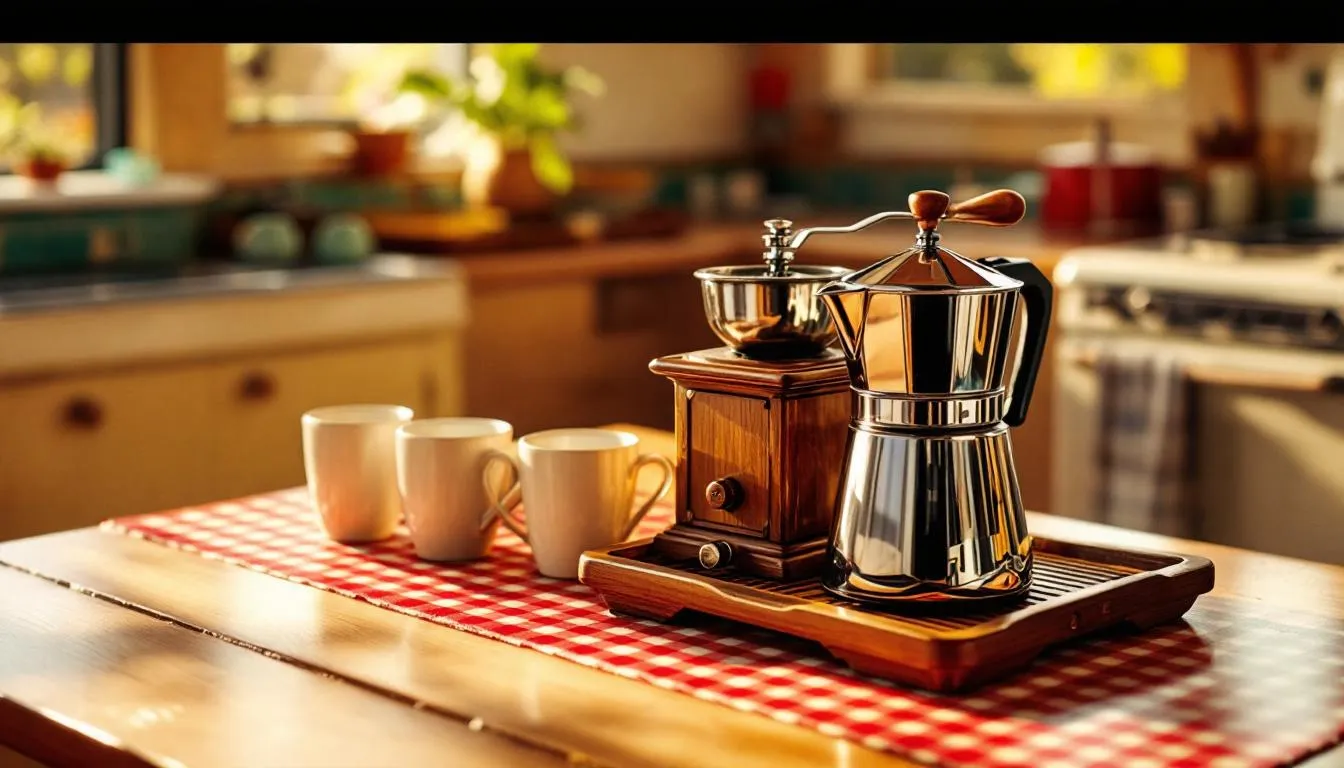
Now that we have a grasp of the basics, let’s talk about the essential equipment you’ll need to brew coffee at home. First on the list is a good grinder. Investing in a burr grinder significantly enhances the coffee flavor compared to using a blade grinder. Burr grinders provide a consistent grind size, which is crucial for even extraction and a balanced cup. Please note - while we recommend utilizing whole bean options for optimal freshness, you do not have to use whole bean. These instructions will work for pre-ground coffee grounds, just be sure to note the grind size, as that may favor one method over another!
An electric gooseneck kettle offers precise control over water pouring, essential for manual brewing methods like pour-over. A temperature-controlled kettle is also vital for optimal coffee extraction. The ideal water temperature for brewing coffee is between 195°F and 205°F. If you are comfortable with a regular kettle, that will also work. The water needs to be hot enough.. just not TOO hot!
A kitchen scale is a must-have for any serious coffee enthusiast. Measuring coffee and water with a scale ensures consistency and accuracy, leading to more reliable results. With these tools, you’ll be well on your way to making coffee that rivals your favorite local coffee shop.
Method 1: French Press
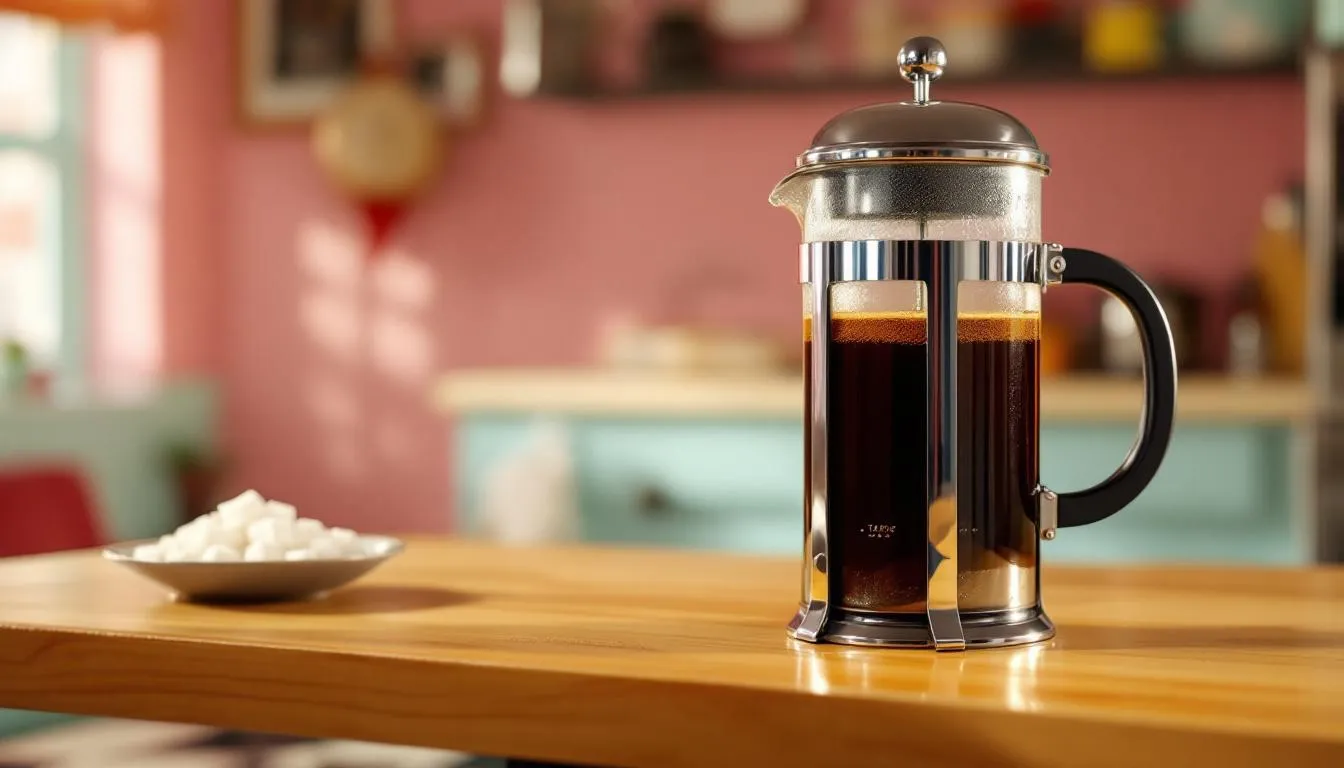
The French Press coffee brewing method is considered one of the best and easiest methods for brewing coffee at home. Boil your kettle and let the water cool slightly. Meanwhile, grind your coffee beans to a coarse consistency resembling breadcrumbs. This grind size is crucial for the French Press as it prevents over-extraction and ensures a smooth, full-bodied cup when using French Presses.
Pour the water in a circular motion over the coffee grounds to ensure even saturation. Allow the coffee to steep for about 4 minutes. Swirl the grounds in the water to enhance extraction.
After 3 and a half minutes:
-
Gently press down the French Press filter to the grounds.
-
Wait a moment after stirring to allow more coffee grounds to settle for a cleaner brew.
-
Stop plunging when the filter touches the top of the liquid to avoid disturbing the settled grounds.
This brew method produces a rich, robust, and delicious coffee that captures the essence of high-quality beans and a strong coffee flavor.
Method 2: Drip Coffee Maker
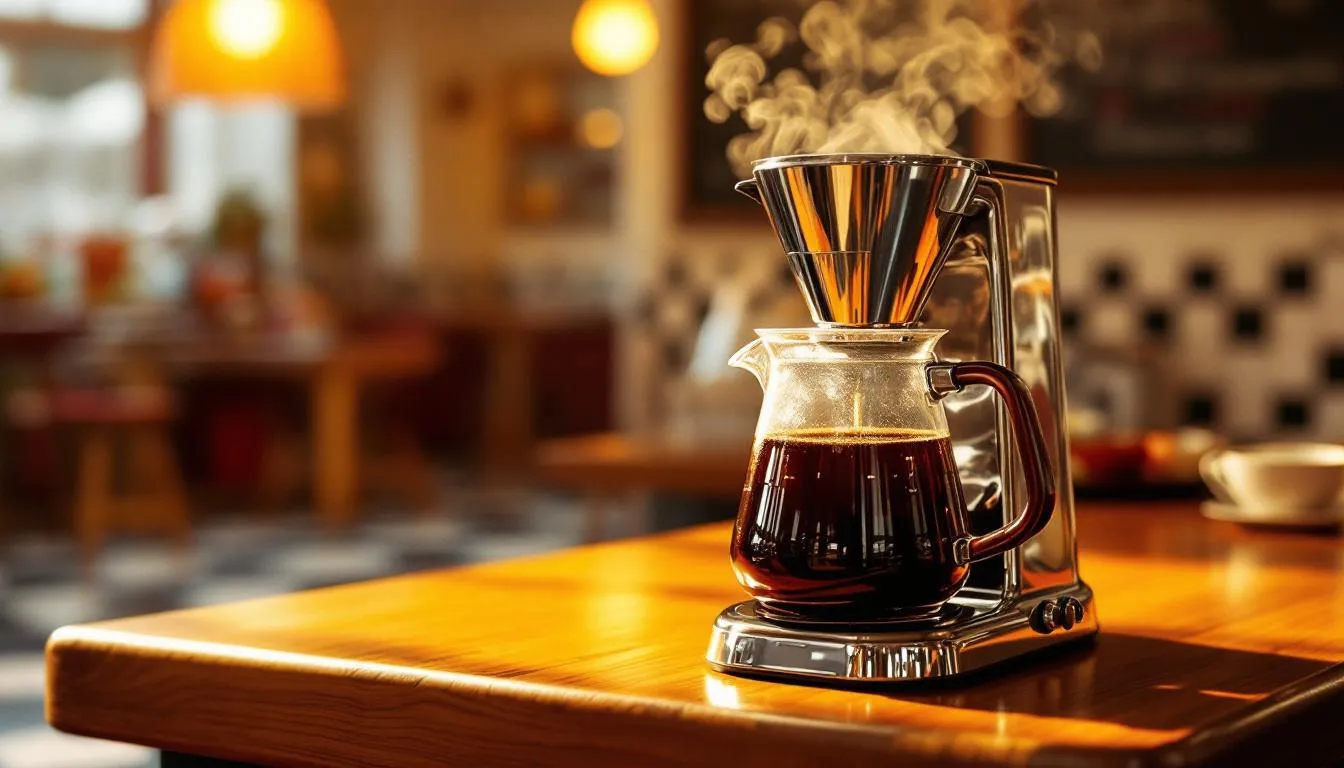
Drip coffee makers are a staple in many households, offering convenience and consistency. The recommended coffee-to-water ratio for brewing coffee with a drip maker is 60 grams of coffee per liter of water. This ratio strikes a balance between strength and flavor, ensuring a tasty cup every time. If you’re wondering how much coffee to use, this guideline will help you achieve the perfect brew.
Modern drip coffee machines often have features such as adjustable strength and temperature settings. Such features let you fine-tune the grinding and brewing process to match your preferences. Regular maintenance, including cleaning the machine, is essential to ensure optimal brewing performance and longevity.
Water temperature plays a significant role in flavor extraction. The optimal brewing temperatures for drip coffee range from 195°F to 205°F. Keeping your machine clean and using high-quality water will help you achieve the best results.
Method 3: Pour-Over
The pour-over method is a favorite among coffee purists for its ability to produce a clean, flavorful cup. Start by using 18 grams of coffee with a finer grind, similar to table salt. This grind size ensures optimal extraction during the brewing process.
Pre-wet your paper filter. This eliminates any papery taste and enhances the final flavor. Perform an initial pour to bloom the coffee grounds, releasing flavors and allowing even extraction. Pour the water in a steady, circular motion to ensure all the grounds are evenly saturated.
A steady pour is crucial for a balanced, better cup. The pour-over method allows you to control every aspect of the brewing process, resulting in a final cup that reflects the true essence of the coffee beans that were poured into a single cup with the same amount of care. This attention to detail ensures that each cup is crafted to perfection.
Method 4: Aeropress
The Aeropress is a versatile and portable coffee maker known for producing a dark, smooth, and rich brew with very little bitterness. To start:
-
Add 18 grams of coffee ground to the brew chamber.
-
Pour in 300ml of hot water.
-
Allow the coffee to steep for about 10 seconds.
-
Press down the plunger.
For optimal flavor when using an Aeropress:
-
Use a finer grind resembling espresso.
-
Allow the coffee to bloom by waiting 30 seconds after adding the water.
-
Adjust the grind based on pressing difficulty: if pressing is too difficult, the grind is too fine; if it’s too easy, the grind is too coarse.
-
Brew for 2 to 3 minutes at around 205°F.
The result is a concentrated brew that can be enjoyed as is or diluted with hot water for a milder cup. The Aeropress is perfect for those who appreciate a strong, bold coffee without the bitterness.
Making Cold Brew Coffee
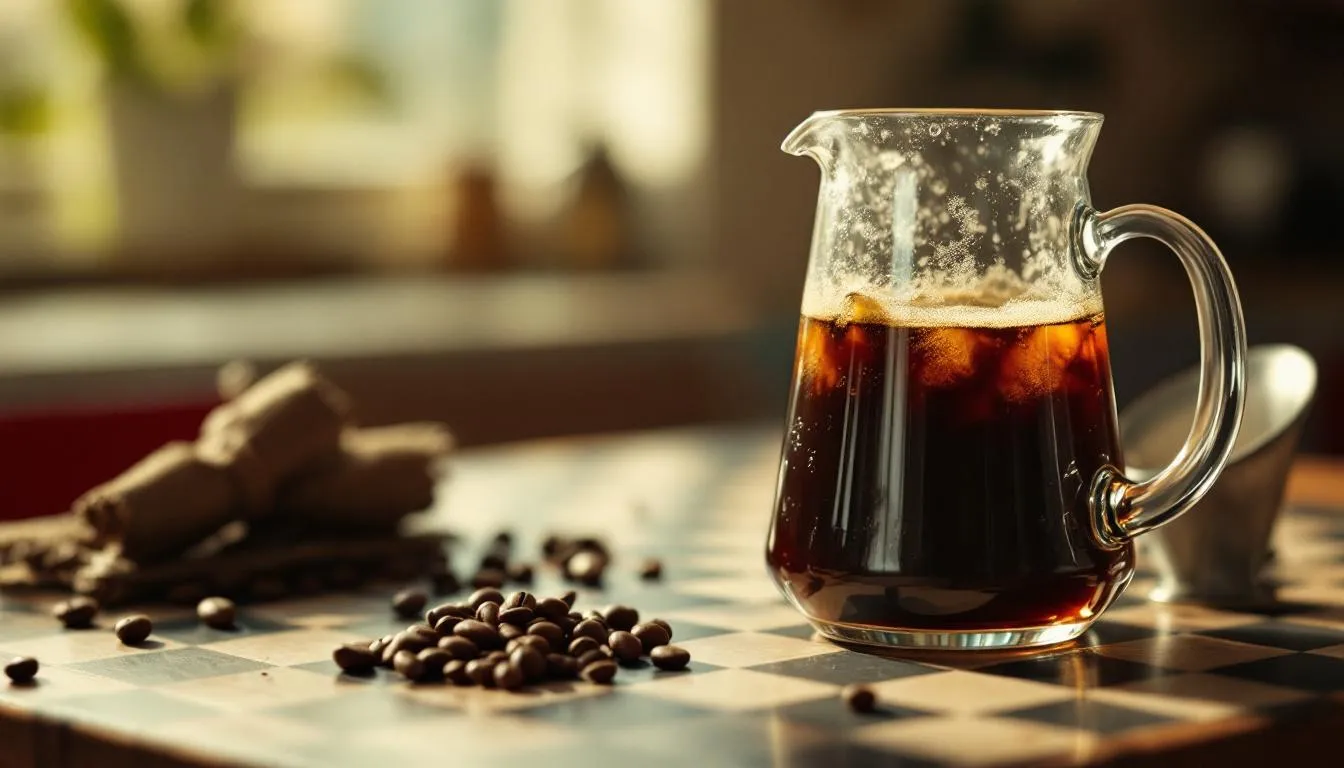
Cold brew coffee is a refreshing alternative to hot coffee, known for its smooth, less bitter flavor. To prepare cold brew, coarsely ground coffee is steeped in filtered water for 12 to 24 hours. This extended steeping period allows the coffee brewing to extract slowly, resulting in a concentrated brew.
After steeping, strain the coffee using a fine mesh strainer lined with cheesecloth or paper filters. This ensures a clean, sediment-free brew. The cold brew concentrate can be stored in the refrigerator for up to a week without losing quality, perfect for those who like to prepare batches ahead of time.
Enjoy your cold brew over ice or dilute it with water or milk to your desired strength. It’s a versatile iced coffee-making method that offers a refreshing twist on your daily cup of coffee.
Tips for Perfecting Your Brew
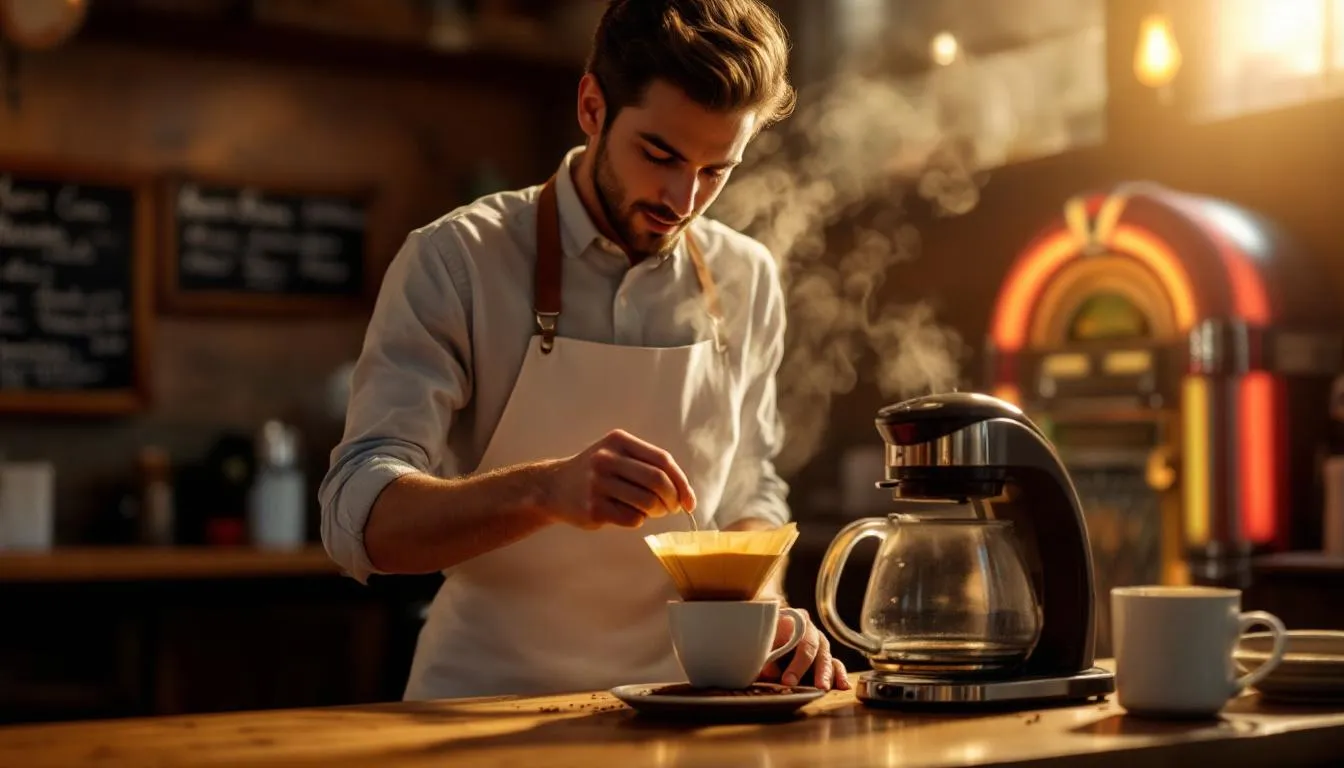
Perfecting your coffee brew involves attention to detail and a bit of experimentation. Filtered water is highly recommended to improve the overall quality of the brewed coffee. Tap water can contain impurities that affect the flavor, so filtered water ensures a cleaner taste.
The coffee-to-water ratio is crucial for a balanced cup. For AeroPress, a stronger ratio is often preferred, such as 1:6. For drip coffee, a ratio between 1:16 and 1:18 is recommended. Experimenting with these ratios will help you find the perfect balance for your taste.
Grind size also plays a significant role in the brewing process. Finer grinds extract flavor quickly, requiring adjustments in the coffee-to-water ratio to avoid over-extraction. Medium heat grind sizes are ideal for drip coffee makers, allowing for proper extraction. Maintaining an optimal water temperature between 195°F and 205°F is essential for extracting the best flavors from your coffee beans.
Summary
In summary, brewing coffee at home is an art that combines the right beans, equipment, and techniques. We’ve explored various methods, from the robust French Press to the smooth cold brew, each offering a unique flavor profile. By understanding the importance of fresh beans, the right grind size, and optimal water temperature, you can transform your home brewing experience.
Experimentation is key to finding your perfect brew. Don’t be afraid to tweak the coffee-to-water ratios and brewing times to suit your taste. The journey of coffee brewing is as enjoyable as the final cup, so take the time to savor each step.
Remember, the goal is to make a cup of coffee that delights your senses and starts your day on a high note. Happy brewing!
Frequently Asked Questions
What is the best coffee-to-water ratio for brewing coffee?
The best coffee-to-water ratio really depends on how you're brewing it; for drip coffee, aim for 1:16 to 1:18, while for AeroPress, try a stronger 1:6 ratio. This way, you'll get a balance that suits your taste!
How does grind size affect coffee brewing?
Grind size plays a crucial role in how your coffee tastes. Finer grinds extract flavors quickly, risking over-extraction, while medium grinds are perfect for drip coffee, ensuring a balanced brew.
What is the difference between cold brew and iced coffee?
Cold brew is made by steeping coffee grounds in cold water for a long time, giving it a smooth, mellow flavor, while iced coffee is brewed hot and then chilled, leading to a more acidic taste. So, if you're after something less bitter, cold brew might be your go-to!
How often should I clean my coffee maker?
For the best coffee experience, clean your coffee maker after each use and do a thorough deep clean at least once a month.
Why is filtered water recommended for brewing coffee?
Using filtered water for brewing coffee enhances its flavor by removing impurities, resulting in a cleaner and more enjoyable cup. Trust me, your taste buds will thank you!
